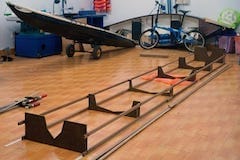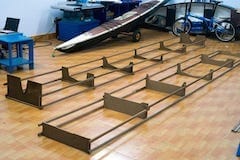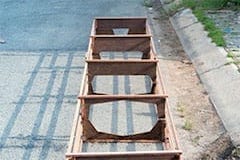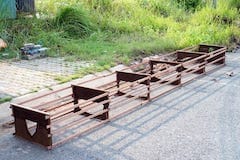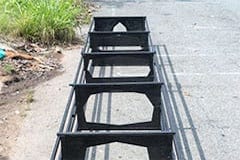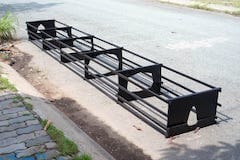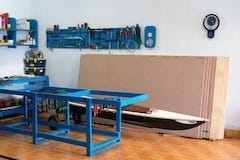I am making a slow start, working mainly on the implementation plan. It’s better to think out all building details beforehand carefully and thoroughly. Unlike a software project though, which is more flexible, in a hardware project, you would have little chance to correct something that went wrong, or correcting it would cost much time, effort, materials… There’re many things to be considered, and require experiences to get done right! One important concern is weight.
HW – 1 weighs at 35 kg, HW – 2 is roughly 30 kg. With my previous two boats, and with my inexperiences, I did put lots more materials into the building, hoping for strength, but they turned out to be really heavy indeed. If HW – 3 could be built at 20 kg, it’s a great success! Imagine that your boat is 10 kg lighter, and that 10 kg saved could be used for additional food, drink on longer trips! And of course, the weight saving should come without any compromisation on quality and durability!
HW – 3 is a really complicated boat, the hull will be stitched together with 4 plywood bilges , while the deck has 5 main bilges. And since the 5.5 m hull length exceeds twice the standard plywood sheet length (2.44 m), there will be 2 joints in each of the hull’s bilges, which I’ve decided to be dovetail joints to further reduce weight and increase strength. In all, every parts of this boat will be more complicated (compared to my previous boats), and hence requires ‘astute’ planning and execution.
Below, I’m building the two halves (hull and deck) of the framing box that would help forming the kayak from plywood planks into the precise desired shape! With the new air compressor and nail gun and glue, all these frames are just quick and easy task which takes just several hours to complete. I’ve switched to using the excellent TiteBond 2 wood glue instead of other normal Polyvinyl Acetate (PVA), which has much better water resistance capability.

